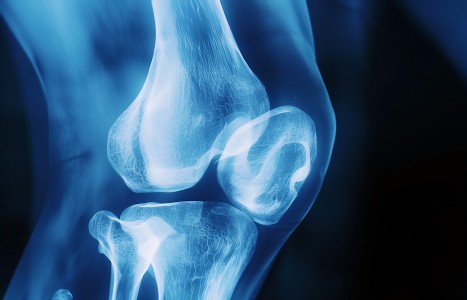While there may be no “magic bullet” when it comes to health, this should not dissuade patients or practitioners from seeking out ingredients that offer multiple health benefits. When it comes to dietary supplements, there are thousands upon thousands of choices. So, why not choose one that can address pain and assist with mental health? A supplement that can address inflammation, while also preventing certain types of cancer.
| Digital ExclusiveSurgery and Herniated Nucleus Pulposus (HNP)
Abstract: Current surgical procedure and decision making vary among practitioners. Most generally agree that surgery is required only after failure of conservative treatment (including an exercise program to restore function) has failed. The presence of progressive neurological deficit (motor weakness, loss of reflexes, etc.) or cauda equina syndrome (bilateral sciatica, saddle dysesthesia, motor weakness in the lower extremities and/or bowel and bladder dysfunction) supersedes generally accepted conservative measures.
As a chiropractor responsible for the primary care of many patients, a general working knowledge of allopathic is a must. Not unlike chiropractic, the medical field is somewhat inconsistent with technique. Different practitioners, from different schools, recommend different procedures, all with varying degrees of success. This discussion will be limited to the types of surgery for the patient with HNP.
Indications
It is generally recognized by most health care providers that before a particular procedure is undertaken, both doctor and patient should fully understand the goals of the procedure. The goal of surgery for the HNP is to relieve sciatica, not necessarily back pain. It is also well accepted that before any of the various surgical approaches are performed to excise the HNP, an attempt has been made to resolve the problem conservatively, utilizing different programs of active rehabilitation. Current evidence indicates that disc nutrition is enhanced by cyclic activity of the spine such as repeated flexion or extension exercises.1,2 I would like to make the correlation to several chiropractic techniques which attempt to restore normal biomechanical function to the vertebral motor unit, thus enhancing the nutrition of the disc.
In a study by MDs Jeffrey and Joel Saal, involving non-operative treatment of the HNP with radiculopathy, they concluded:
- Lumbar HNP can be treated non-operatively with a high degree of success (96 percent).
- Failure of passive treatment is not sufficient for the decision to operate, and active rehabilitation treatment must be tried.
- The presence of weakness does not adversely affect the outcome of non-operative treatment and should not be used as overwhelming evidence that surgery is necessary.
- The presence of disc extrusion does not adversely affect the outcome of non-operative treatment and should not be used as overwhelming evidence that surgery is necessary.
- The premise that operative patients fare better in the first year is contrary to our results.
- Failure to improve with aggressive non-operative measures suggests the presence of stenosis, and should probably warrant greater decompression that purely disc excision or nucleotomy.
- High surgical volumes of "simple" disc excision or nucleotomy probably represent overtreatment in a group that carries a favorable prognosis in the short and long term by non-operative treatment.
- The decision to operate should be based on the patient's level of function and whether that functional level can be improved be an aggressive rehabilitation program, rather than on imaging studies and/or physical examination findings.3
Generally recognized indications for HNP surgery include: sciatica predominating over back pain with a positive SLR (straight leg raise) that intensifies the leg pain; neurological deficit (reflex loss or weakness); and positive imaging studies that correlate clinically. This last point is especially important since 33 percent of asymptomatic patients will show HNP on MRI examination.
Immediate indications for surgery that shouldn't be considered elective include: progressive neurogical deficit, and cauda equina syndrome. Spangforts reported on 2500 cases of HNP of which 1.2 percent had cauda equina syndrome. Of note, Webers' 10 year follow- up of muscle weakness (extensor hallisus longus), sensory deficit and reflex loss was not statistically different in the surgical group verses the conservative care group.
Surgical Options:
1. Microsurgery is an approach to remove the HNP with minimal disruption of bone or soft tissue. Williams, in review of 903 patients who underwent microlumbar discectomy, reported a 14.2 percent re-operation rate with recurring herniation most commonly at the same level.4 Zahrani reported on 60 patients who underwent microdisectomy with an average follow-up of 33 months by phone. He reported a 96 percent success rate.5
A number of technical problems can occur when removing disc herniation without any bone resection. In many cases of HNP, extruded fragments may migrate proximally or distally to the disc space. Adhesions between the nerve root and disc often make it difficult to mobilize the nerve root to expose the HNP. To prevent excessive traction of the nerve root many surgeons refer to microdisectomy as a small incision with adequate bone removal, including a portion of the superior and inferior lamina that may require a partial facetectomy to prevent damage to the nerve root.
2. Laminotomy is a traditional approach used to remove displaced disc material in patients with HNP. The surgeon forms a hole in the lamina to reach and remove the disc without disrupting the continuity of the entire lamina. This approach is mistakenly called a laminectomy, the more extensive removal needed for a wider exposure.
3. Percutaneous discectomy is a method for treatment of HNP. This procedure uses a localizing probe followed by a cannuia, which holds the nucleotome probe. The nucleotome probe simultaneously cuts and sucks nuclear material from the disc space into a special cannister. This procedure involves no muscle dissection, bone removal or large skin incision. This is an outpatient procedure that requires a local anesthetic. The success of this procedure is based on decompression of the disc space by producing a hole in the annulus with the cutting probe and evacuating the nuclear material with the cutting and suction probe. Proponents of this technique advise its use limited to disc protrusions (bulging disc with intact annulus - contained).6 The majority of surgical discectomies, however are for extruded or sequestered discs (non-contained).
4. Chemonucleolysis is a procedure where an enzyme is injected directly into the disc to dissolve it. This procedure was widely used from 1969-1975 until a double blind study demonstrated no significant difference between chymopapain injections and placebo.7 In the early '80s, the drug was refined and rereleased by the FDA. The use increased until 1987 when Webers' study comparing the natural history of sciatica with chymopapain injections and found no statistical difference.7 The decline in use can also be attributed to the occurrence of anaphylaxis and unpredictable neurological complications. The incidence of death is also a factor and is reported at 1:30,000. Chymopapain has also been shown to induce injury when coming into contact with neural structures. Studies also show much greater success with surgery than this procedure.7
Conclusion
It is generally recognized that elective surgery for HNP is used as a last resort. Most authors agree that a program of rehabilitation, stressing joint motion is very effective for HNP. The statistics of efficacy of spinal surgery vary greatly to date, although are very high when done for the right reasons, with the right patient/doctor expectations.
I would like to conclude this discussion by admitting my conservative bias. Back pain continues to be a very complicated subject. There are many valid theories on both the causes and solutions to this epidemic, all of which are too lengthy to go into this paper. It is my hope that all practitioners will work together to benefit the patients presenting with these problems. Surgery is certainly not the best answer, but in certain cases surgery may undoubtedly be warranted. I urge all practitioners to continue quality research to help us make quality decision on treatment protocols.
References
- Adams MA, Hutton WC. Gradual disc prolapse. Spine 1985:10:524.
- Krag M, Seroussi R, Wilder D, et al. Internal displacement from an in vitro loading of human spinal motion segments: experimental results in finite element model predictions. Spine 1987: 12:1001-1007.
- Jeffrey Saal, MD, Joel Saal, MD. Non-operative treatment of herniated lumbar intervertabral disc with radiculopathy, and outcome study. Spine 1989:14(4).
- Williams, R. Microlumbar discectomy. Spine 1986: 11(8):851-852. 1986.
- Zachrini, F. Microlumbar discectomy. Spine 1988: 13(3):358-359.
- Morris, J. Percutanious discectomy. Orthopedics 1988: 11(10):1483-1487.
- Nachemson A, Rydevik B. Chemonucleolysis for sciatica, a clinical review. ACTA Ortho. Scand 1988: 59:56-62.
Jeffrey M. Block, DC
Hauppauge, New York


